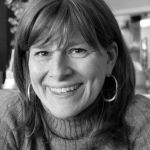
John Bryan
CultureWorks is the privately-funded nonprofit organization that serves as the local arts agency for Richmond, Virginia. Although it is only the nation’s 43rd largest city, Richmond has a significant business community as evidenced by it being the headquarters for 11 Fortune 1000 companies – 6 of which are F500s.
Five ongoing strategies have helped CultureWorks engage good relationships between Richmond’s arts and business communities:
1) CultureWorks is an active member of the Greater Richmond Chamber. “Active” includes volunteering for committees, paying to be part of the annual 3-day InterCity Visit, and attending Chamber gatherings – all of which help to establish and strengthen personal relationships.
2) CultureWorks publishes reports on its activities and accomplishments and makes sure that business leaders read the reports with interest. I snail-mail a hardcopy of each report to several dozen business leaders, and I attach a hand-written personalized sticky note that has a message such as, “Frank – Good to see you last week. I’ve highlighted a couple of things on this report that you might find interesting.” It’s a lot of work preparing 50 or more of these letters, but the personalized notes cause this to be a communication that the business leaders do read.
3) CultureWorks invites business leaders to volunteer isolated segments of their time to serve on short-term project-specific committees and task teams. Examples include the review panels for the CultureWorks Grants Program and our metrics task team. This not only builds relationships, but also gives the corporate participants a first-hand look at the value of the arts.
Read More


































